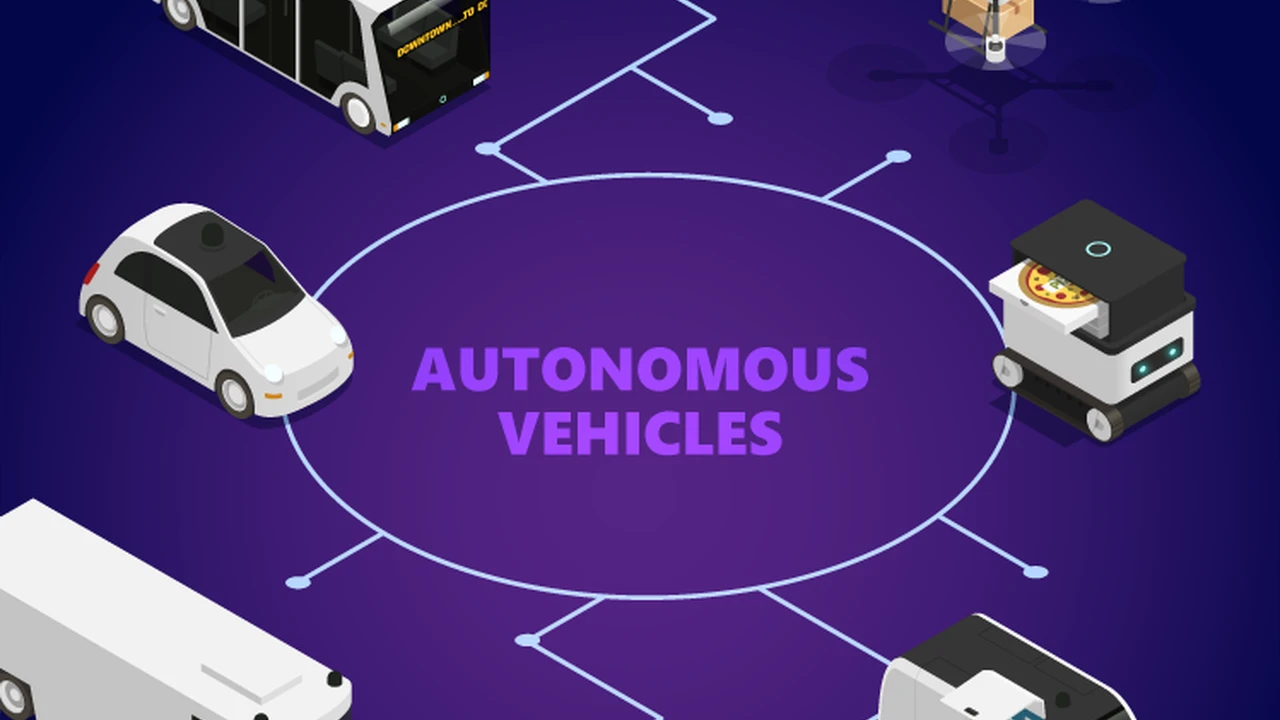AI and the Future of Education: Personalized Learning

Explore how AI is transforming education and enabling personalized learning experiences. This article discusses the applications of AI in education. Discover the future of learning with AI.
The Personalized Learning Revolution with AI Artificial Intelligence
Hey there, future-thinkers! Ever feel like education is a one-size-fits-all kinda deal? Well, buckle up, because AI is about to throw that notion out the window. We're talking about a seismic shift towards personalized learning, where the curriculum adapts to *you*, not the other way around. Forget struggling to keep up or being bored because you're already ahead. AI is here to make learning, well, actually *learnable*.
So, how's this magic trick pulled off? It's all about data, baby! AI algorithms analyze a student's strengths, weaknesses, learning style, and pace. This info then fuels personalized learning paths, tailored content, and customized feedback. Think of it as having a super-smart, endlessly patient tutor who knows exactly what you need, when you need it.
AI Powered Adaptive Learning Platforms and Systems
Adaptive learning platforms are the workhorses of this personalized revolution. They use AI to dynamically adjust the difficulty and content based on your performance. Nail a concept? The platform moves on. Struggling? It provides extra support and resources until you get it. It's like a video game that levels up or down based on your skill.
Example: Knewton Alta
Knewton Alta is a popular adaptive learning platform used in higher education. It focuses on math and science courses, providing personalized learning paths for students. The platform uses AI to identify knowledge gaps and offers targeted practice and remediation. Pricing varies depending on the institution and course, but generally falls in the range of $20-$50 per course.
Example: ALEKS (Assessment and Learning in Knowledge Spaces)
ALEKS is another well-known adaptive learning system, particularly strong in math and chemistry. It uses a knowledge graph to assess what you already know and what you need to learn. ALEKS then creates a personalized learning path to fill in the gaps. Similar to Knewton, pricing is typically per course and varies by institution.
AI Tutoring Systems Benefits and Features
Imagine having a personal tutor available 24/7. That's the promise of AI tutoring systems. These systems use natural language processing (NLP) to understand your questions and provide detailed explanations and feedback. They can even adapt their teaching style to match your learning preferences.
Example: Third Space Learning
Third Space Learning connects students with qualified math tutors for one-on-one online sessions. While not purely AI, it leverages AI to personalize the learning experience by matching students with tutors who have expertise in the areas where they need help. Pricing is typically per session and can range from $20-$40 per session.
Example: QuizBot.ai
QuizBot.ai allows teachers to quickly create quizzes and tests in seconds. It has the ability to create a variety of question types including multiple choice, fill in the blank, and short answer. It also allows teachers to customize the difficulty and topics of the quizzes, ensuring that they are tailored to the needs of their students.
AI Driven Content Creation Personalized Curriculum
Creating personalized content at scale is a massive challenge. But AI is stepping up to the plate. AI-powered tools can generate customized learning materials, including text, videos, and interactive exercises. This allows educators to create truly personalized learning experiences for each student.
Example: Querium
Querium provides AI-driven personalized STEM education for high school and college students. It offers a virtual tutor that provides step-by-step guidance and feedback. Querium also generates personalized practice problems and assessments. Pricing is subscription-based, with options for individual students and schools.
Example: Smart Sparrow
Smart Sparrow is a platform that allows educators to create interactive and adaptive learning experiences. It provides tools for designing personalized lessons and assessments. Smart Sparrow also offers analytics to track student progress and identify areas where they need help. Pricing varies depending on the institution and the features used.
Automated Grading and Feedback AI Efficiency
Grading papers is a time-consuming task for educators. AI can automate this process, freeing up teachers to focus on more important things, like actually teaching! AI-powered grading tools can automatically assess essays, multiple-choice tests, and even code. They can also provide personalized feedback to students, helping them improve their understanding.
Example: Gradescope
Gradescope is a popular AI-powered grading tool used in higher education. It supports a variety of assessment types, including handwritten exams, coding assignments, and problem sets. Gradescope automates the grading process and provides detailed feedback to students. Pricing is typically per course and varies by institution.
Example: Crowdmark
Crowdmark is another AI-assisted grading platform that focuses on streamlining the grading process for large classes. It allows instructors to grade assignments collaboratively and provides tools for giving personalized feedback. Crowdmark also integrates with learning management systems. Pricing varies depending on the institution and the number of students.
AI Powered Learning Analytics Student Performance
Learning analytics uses data to understand how students are learning. AI can enhance learning analytics by identifying patterns and trends that might otherwise go unnoticed. This information can be used to improve teaching strategies, personalize learning experiences, and identify students who are at risk of falling behind.
Example: Civitas Learning
Civitas Learning provides analytics solutions for higher education institutions. It uses AI to analyze student data and identify patterns that predict student success. Civitas Learning also offers tools for personalized interventions and support. Pricing varies depending on the institution and the features used.
Example: Brightspace Insights
Brightspace Insights is a learning analytics platform integrated with the Brightspace learning management system. It provides instructors with data-driven insights into student engagement and performance. Brightspace Insights also offers predictive analytics to identify students who may need additional support. Pricing is typically included with the Brightspace LMS subscription.
The Future of Learning with AI Integration
The future of education is undoubtedly intertwined with AI. We're moving towards a world where learning is personalized, engaging, and accessible to everyone. While there are challenges to overcome, the potential benefits of AI in education are enormous. Get ready for a future where learning is truly a personalized journey, guided by the power of AI.
Comparing the Costs and Benefits of AI Learning Tools
Choosing the right AI-powered learning tools requires careful consideration of both costs and benefits. While the initial investment in these tools can be significant, the long-term benefits of personalized learning, improved student outcomes, and increased teacher efficiency can outweigh the costs. Here's a quick comparison table:
| Tool Type | Examples | Cost | Benefits |
|---|---|---|---|
| Adaptive Learning Platforms | Knewton Alta, ALEKS | $20-$50 per course | Personalized learning paths, targeted practice, improved student performance |
| AI Tutoring Systems | Third Space Learning, QuizBot.ai | $20-$40 per session | One-on-one tutoring, personalized feedback, 24/7 availability |
| AI-Driven Content Creation | Querium, Smart Sparrow | Subscription-based | Personalized learning materials, interactive lessons, adaptive assessments |
| Automated Grading | Gradescope, Crowdmark | Per course | Automated grading, personalized feedback, increased teacher efficiency |
| Learning Analytics | Civitas Learning, Brightspace Insights | Varies by institution | Data-driven insights, predictive analytics, personalized interventions |
Real World AI Use Cases and Scenarios
Let's look at some real-world scenarios where AI is making a difference in education:
- Personalized Math Instruction: A student struggling with algebra uses an adaptive learning platform like ALEKS. The platform identifies their specific knowledge gaps and provides targeted practice problems. As the student progresses, the platform adjusts the difficulty level to keep them challenged.
- AI-Assisted Essay Grading: A high school English teacher uses Gradescope to grade student essays. The AI tool automatically identifies grammatical errors and provides feedback on the essay's structure and content. This frees up the teacher to focus on providing more personalized feedback to students.
- Predictive Analytics for Student Success: A university uses Civitas Learning to analyze student data and identify students who are at risk of dropping out. The university then provides these students with personalized support and resources to help them succeed.
The Ethical Considerations of AI in Education
Like any powerful technology, AI in education raises ethical considerations. We need to be mindful of data privacy, algorithmic bias, and the potential for over-reliance on technology. It's crucial to ensure that AI is used to enhance human learning, not to replace it.
:max_bytes(150000):strip_icc()/277019-baked-pork-chops-with-cream-of-mushroom-soup-DDMFS-beauty-4x3-BG-7505-5762b731cf30447d9cbbbbbf387beafa.jpg)






